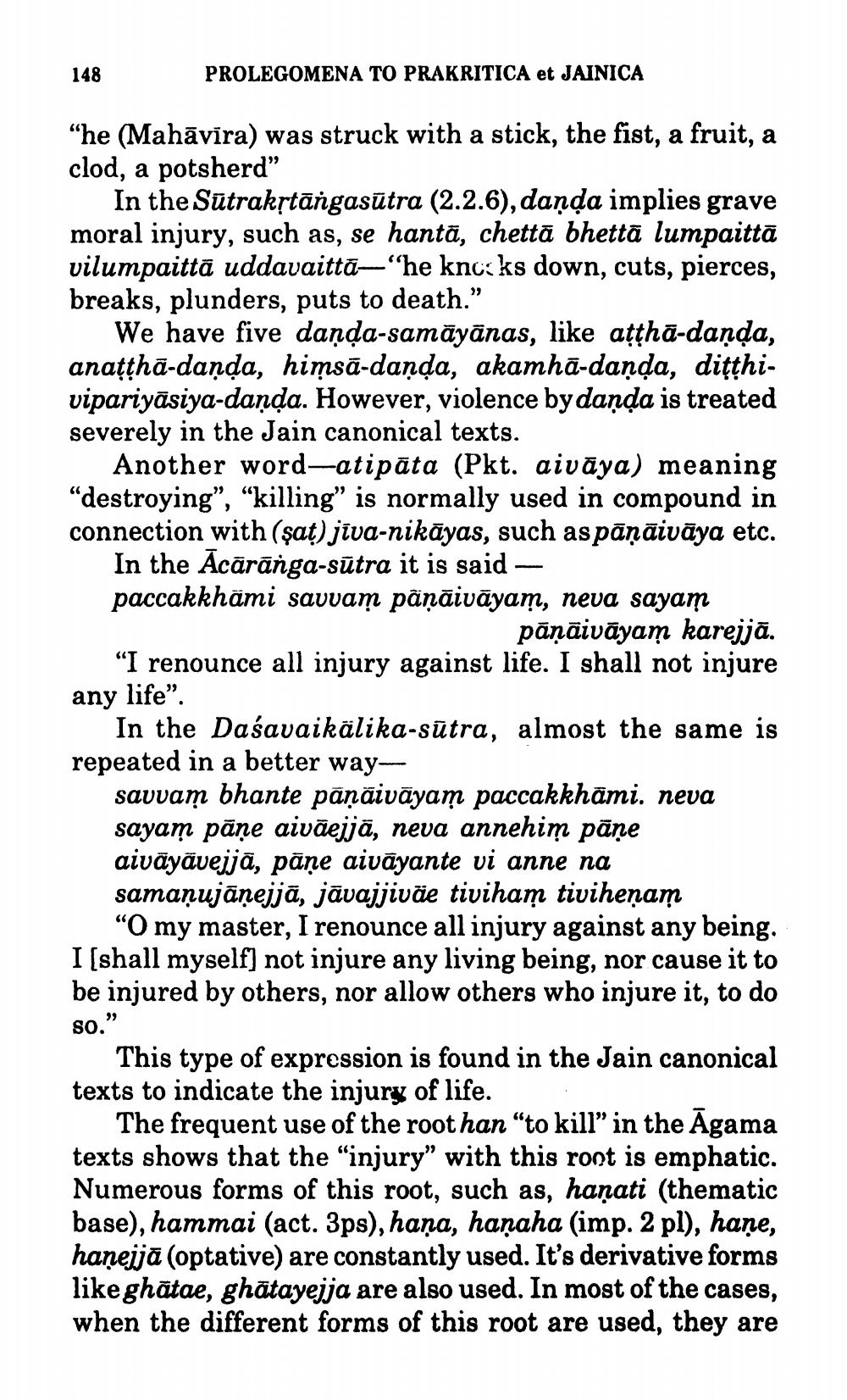________________
148
PROLEGOMENA TO PRAKRITICA et JAINICA
"he (Mahāvīra) was struck with a stick, the fist, a fruit, a clod, a potsherd"
In the Sūtrakstāngasūtra (2.2.6), daņda implies grave moral injury, such as, se hantā, chettā bhettă lumpaittā vilumpaittā uddavaittā—'he knc: ks down, cuts, pierces, breaks, plunders, puts to death."
We have five daņda-samāyānas, like atthā-daņda, anatthā-danda, himsa-danda, akamhā-danda, dițthi. vipariyāsiya-danda. However, violence by danda is treated severely in the Jain canonical texts.
Another word-atipāta (Pkt. aivāya) meaning "destroying”, “killing” is normally used in compound in connection with (şat) jīva-nikāyas, such as pāņāivāya etc.
In the Acārānga-sūtra it is said — paccakkhämi savvam pāņāivāyam, neva sayam
pāņāivāyam karejjā. "I renounce all injury against life. I shall not injure any life".
In the Daśavaikälika-sūtra, almost the same is repeated in a better way
savvam bhante pāņāivāyam paccakkhāmi. neva sayam pāņe aivāejjā, neva annehim pāņe aivāyāvejjā, pāņe aivāyante vi anne na samaņujānejjā, jāvajjiväe tiviham tivihenam
“O my master, I renounce all injury against any being. I (shall myself) not injure any living being, nor cause it to be injured by others, nor allow others who injure it, to do so."
This type of expression is found in the Jain canonical texts to indicate the injury of life.
The frequent use of the root han "to kill” in the Agama texts shows that the “injury” with this root is emphatic. Numerous forms of this root, such as, hanati (thematic base), hammai (act. 3ps), hana, hanaha (imp. 2 pl), hane, hanejjā (optative) are constantly used. It's derivative forms like ghātae, ghātayejja are also used. In most of the cases, when the different forms of this root are used, they are




